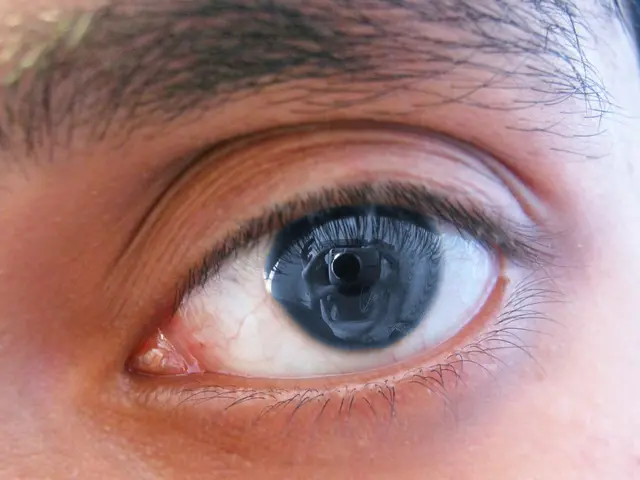Enhanced Sexual Performance: Yoga's Key Contributions
In modern times, the practice of yoga has garnered widespread attention for various health benefits, including improvements in sexual function. Yoga is believed to alleviate conditions such as stress, anxiety, depression, and metabolic syndrome, among others. Recent studies have delved into the underlying mechanisms, revealing that yoga lowers inflammation, reduces stress, and boosts brain-healthy proteins.
The question arise, however, whether the claims of improved sexual experiences are backed by scientific evidence. To address this question, we have examined existing research.
Sexual Benefits for Women
One notable study published in the Journal of Sexual Medicine found that yoga can indeed enhance sexual function for women, particularly those over 45 years old. The research involved 40 women who self-reported on their sexual function before and after 12 weeks of yoga sessions. After this period, their sexual function significantly improved across all sections of the Female Sexual Function Index, including desire, arousal, lubrication, orgasm, satisfaction, and pain. Approximately 75% of the women reported an improvement in their sex life.
The women were trained on 22 poses, or yogasanas, considered helpful in strengthening pelvic floor muscles, improving digestion, and boosting mood. Examples of these poses include trikonasana (triangle pose), bhujangasana (snake pose), and ardha matsyendra mudra (half spinal twist). A comprehensive list of these yogasanas can be found [here].
Sexual Benefits for Men
Yoga's benefits extend to men as well. A study led by Dr. Vikas Dhikav, a neurologist at the Dr. Ram Manohar Lohia Hospital in New Delhi, India, found that a 12-week yoga program improved male sexual satisfaction.
By the end of the study period, participants reported significant improvements in their sexual function as evaluated by the Male Sexual Quotient. The researchers observed enhancements across all aspects of male sexual satisfaction, including desire, intercourse satisfaction, performance, confidence, partner synchronization, erection, ejaculatory control, and orgasm.
Furthermore, a comparative trial by the same team of researchers revealed that yoga is a viable alternative to fluoxetine (Prozac) for treating premature ejaculation. This trial included 15 yoga poses, ranging from simpler ones like Kapalbhati to more complex ones like dhanurasana (bow pose).
Mechanisms Behind Improved Sexual Function

Researchers at the University of British Columbia's Department of Obstetrics and Gynaecology have attempted to elucidate the mechanisms behind yoga's sexual-enhancing effects. Their study found that yoga regulates attention and breathing, lowers anxiety and stress, and activates the section of the nervous system that promotes relaxation. All of these effects are associated with improvements in sexual response, suggesting that yoga may, in turn, contribute to sexual health.
Another important factor is the psychological impact of yoga. Female yoga practitioners have been found to be less likely to objectify their bodies and more aware of their physical selves. This self-awareness may lead to increased sexual responsibility, assertiveness, and libido.
Moola Bandha and Yogic Connections
Despite stories about releasing blocked energy and moving "kundalini energy" being met with skepticism, other yogic concepts may offer more concrete explanations for improved sexual function. The moola bandha, or perineal contraction, has been found to stimulate the nervous system in the pelvic region, promoting relaxation and potential improvements in sexual function.
While research into the power of the moola bandha and other yogic concepts remains limited, their potential benefits are intriguing. Incorporating practices like the moola bandha and bhekasana (frog pose), which strengthens the pelvic floor, into daily routines could yield improvements in sexual health.
Reliability of the Evidence
It's essential to remember that the existing scientific evidence for yoga's sexual benefits is limited and often based on small samples without control groups. While promising, more research is needed to confirm these claims.
However, recent studies focusing on women with specific health conditions, such as metabolic syndrome or multiple sclerosis, have provided stronger evidence for yoga's impact on sexual health. These studies suggest that yoga may improve both physical ability and sexual function in these populations.
In conclusion, while more research is required, the available evidence suggests that yoga may offer significant benefits for sexual health. By promoting relaxation, increasing body awareness, and strengthening the pelvic floor, yoga could potentially enhance sexual experiences and address sexual dysfunction in both men and women.

- The study published in the Journal of Sexual Medicine offers evidence that yoga can indeed enhance sexual function for women, particularly those over 45 years old, as their sexual function significantly improved across various aspects after 12 weeks of yoga sessions.
- A study led by Dr. Vikas Dhikav found that a 12-week yoga program improved male sexual satisfaction, with participants reporting significant improvements in their sexual function as evaluated by the Male Sexual Quotient.
- Researchers at the University of British Columbia's Department of Obstetrics and Gynaecology suggest that yoga may contribute to sexual health by regulating attention and breathing, lowering anxiety and stress, and activating the section of the nervous system that promotes relaxation, all of which are associated with improvements in sexual response.








